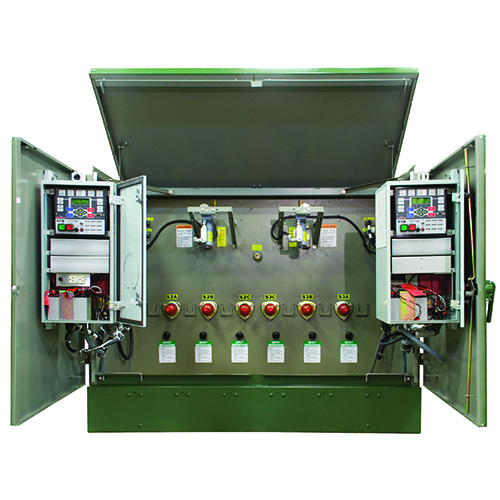Download document () of 20
Download
You have exceeded the download limit
Electrical switchgear refers to a centralized collection of circuit breakers, fuses and switches (circuit protection devices) that function to protect, control and isolate electrical equipment. The circuit protection devices are mounted in metal structures. A collection of one or more of these structures is called a switchgear line-up or assembly.
Switchgear is commonly found throughout electric utility transmission and distribution systems as well as in medium to large sized commercial or industrial facilities. Standards for electrical switchgear are defined by IEEE in North America and by IEC in Europe and other parts of the world.
ANSI/IEEE C37.20.7 classification summary
Arc resistant testing standards are defined by ANSI/IEEE C37.20.7. This standard defines two levels of accessibility to switchgear assemblies. Type 1 provides protection only when in front of the gear. Type 2 provides protections on all sides. In addition, a suffix is added to define arc performance for control compartments and between vertical sections of the switchgear. Suffix B designates equipment where normal operation of the equipment involves opening the door or cover on compartments specifically identified as low-voltage control or instrumentation compartments. Suffix C designates for equipment where isolation from the effects of an internal arcing fault is desired between all adjacent compartments within a switchgear assembly. And suffix D designates specifically designed for installations where some external surfaces of the equipment are inaccessible and no need exists to use a Type 2 design. Eaton's arc-resistant medium-voltage switchgear options include Type 2, 2B and 2C.
Additionally, remote racking can be used perform operations such as disconnect, test and connect of circuit breakers and auxiliary compartments of metal-clad switchgear from typically 25-30 feet away.
Watch the video to learn about switchgear that provides front access.
ANSI and IEEE standards define voltage classifications as follows:
Medium-voltage switchgear is classified by the maximum voltage it can service. For example, 15 kV switchgear (maximum voltage rating) is commonly applied at various actual voltages including: 12.47 kV, 13.2 kV, 13.8 kV and 14.4 kV.














